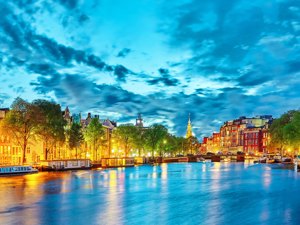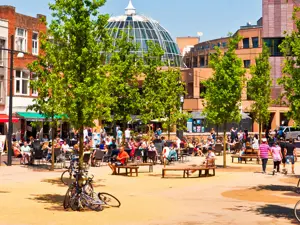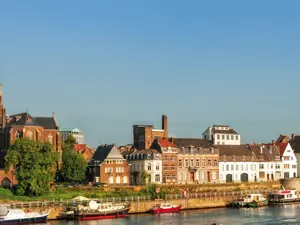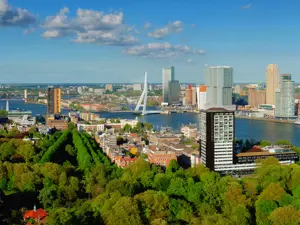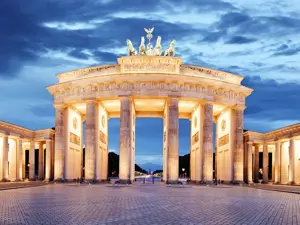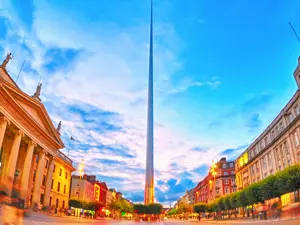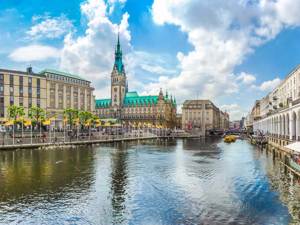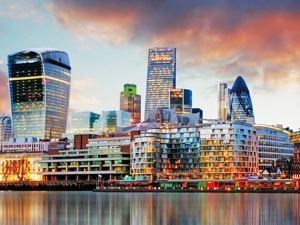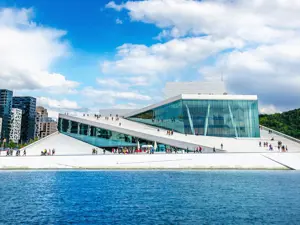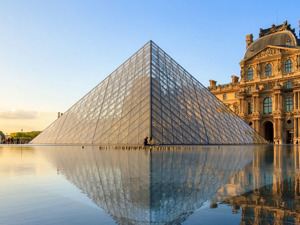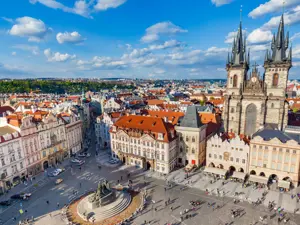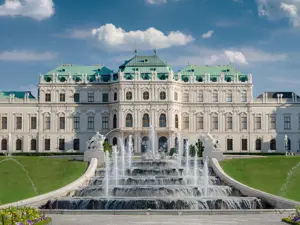Tour of Friesland with a stop in Groningen
Friesland is one of the twelve provinces of the Netherlands. Lapped by the waters of the Wadden Sea and an incomparable natural reserve and home to seals, waders, ducks, geese, sheep and cows, in 2010 it was declared a World Heritage Site by UNESCO. The ideal place for adventurous mudflat hiking, it is also excellent for birdwatching and for seeing seals close up.

A long weekend is enough to get to know Groningen and its province, between land and sea, wandering around the peaceful villages in which a bike is the most common form of transport. The houses have no fences and the private gardens blend seamlessly with the public parks.
The windmills
Even windmills - Dutch landmarks that have survived up until the present day - are part of the scenery, and many have been turned into museums. Although today there are only 124 windmills in Friesland, while up until 1850 there were some 2,400. One mill open to the public is in Anjum, De Eendracht. It offers six floors of history illustrated by photographs and reproductions of the old windmills of Friesland and Dongeradeel. From the sixth floor there is a splendid view of Lauwersmeer.

Another symbol of Holland are clogs, which were extremely important in the past for keeping feet dry on muddy land. A must-see destination is the old factory belonging to the Scherjon family, in Noardburgum, which still today produces practical and even elegant clogs.
The navigable waterways
A visit to Friesland would not be complete without a trip on the canals or lakes, and the area has over 3,000 km of navigable waterways.

After embarking at the port of Heeg, you enter a fairytale world of green and blue, passing houses with gardens, wild animals, Friesian cows at pasture, wind farms and mills. You soon arrive in Sloten, one of the smallest fortified villages in the world. Here you can try a local dish of raw herring with onions.
Heeg
Another place to stop is Heeg, where you can learn about historic crafts and about the bungalows built over the water. A visit is also worthwhile to the botanical gardens and greenhouses, famous for their tulips and wide variety of flowers, such as those of Luttlegeest, which are specialised in orchids and butterflies.

Sneek
In the historic town of Sneek, a boat can be rented even if you do not have a licence, as the waters of the Freisland lake are very shallow - no more than 1.5 metres deep. The characteristic narrow streets of the town are the ideal place for shopping and snacking in the coffee bars.

Groningen
And, before leaving Friesland, pay a visit to Groningen, a university town that is best discovered on foot or by bike. The route towards the centre passes old buildings, churches and monuments, and the new buildings are never higher than the old towers or belfries of the places of worship. A breathtaking view of the city, which has the best urban centre in Holland, can be enjoyed at 97 metres up from the top of the Martini Tower, one of the oldest churches in the town.

Art in museums
New architectural and design products can be appreciated with a modern museum tour. This tour could begin in the Groninger Museum, move on to the Video Pavillon, the work of the Dutch architect Rem Koolhaas, passing by the Galerie Muskee, a meeting place of emerging Dutch painters. It could then continue to the Minerva Academie, a museum of visual arts and design and the work of the architect Piet Blom, designer of the Cube Houses of Rotterdam, and end at the Noorderlicht Photography platform.

Other places to visit include the Nederlands Stripmuseum, Universiteits Museum, Openbare Bibliotheek by the Italian architect Giorgio Grassi, and the Waag Straat Complex by another Italian architect, Adolfo Natalini, which encompasses a structure of glass and steel in a building from 1635, the former Goundkantoor gold exchange, now a cafeteria, from which hang sculptures by Janet Mullarney.
Text by Pia Bassi
Updated by Alisè Vitri
Avion Tourism Magazine
Photos: Copyright © Sisterscom.com / Shutterstock
Photos: Copyright © Sisterscom.com / Shutterstock
All rights reserved.
Tourism Board
www.holland.com
www.toerisme.groningen.nl
www.toerisme.groningen.nl
Partnership with Booking.com
WHERE TO GO in Groningen
Monuments and Museums
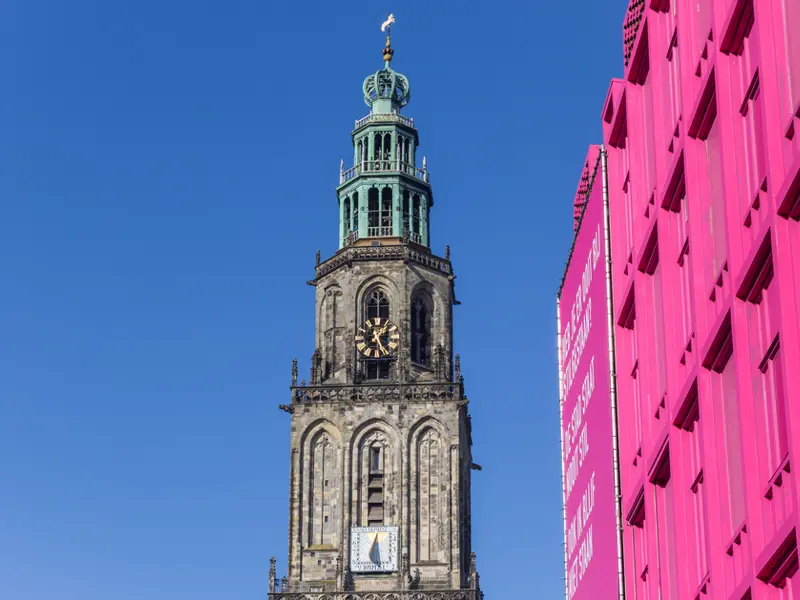
TORRE MARTINI - CHIESA MARTINI
Martinikerkhof 1
The Martini Tower (Martinitoren) is the pride of Groningen. It is almost one hundred metres tall and dates back to 500 years ago. The city was built around the tower.
The bells inside the tower sound throughout the city and are known to be among the finest in Europe. The tower is connected to Martini Church, which dates back to the thirteenth century. Of particular interest are the organ and the frescoes. Don’t miss the spectacular view from the top of the tower.
The bells inside the tower sound throughout the city and are known to be among the finest in Europe. The tower is connected to Martini Church, which dates back to the thirteenth century. Of particular interest are the organ and the frescoes. Don’t miss the spectacular view from the top of the tower.
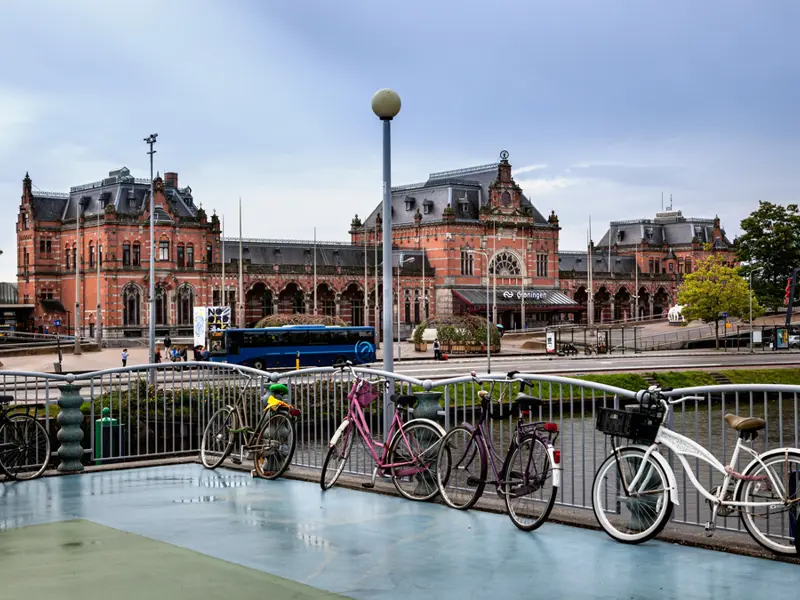
STAZIONE FERROVIARIA
The Groningen station is an extremely important monument and represents the entrance gate to the city. In the largest main hall you go back in time to the nineteenth century: as a traveler of the time you can admire armchairs tidy for different classes, beautiful decorated ceilings six meters tall, stained glass in retro style and special lamps in wrought iron.
Museums
WALL HOUSE
A.J. Lutulistraat 17
The most interesting house in Groningen is Wall House, which is located on the banks of the lake and was designed by the American architect John Hejduk. Americans and Japanese, fascinated by this work of art, are the house’s principal visitors. Although the residence of an artist for six months of the year, it is regularly open to the public and holds both exhibitions and shows.
The most interesting house in Groningen is Wall House, which is located on the banks of the lake and was designed by the American architect John Hejduk. Americans and Japanese, fascinated by this work of art, are the house’s principal visitors. Although the residence of an artist for six months of the year, it is regularly open to the public and holds both exhibitions and shows.

GRONINGER MUSEUM
Museumeiland 1
The Groninger Museum, the work of international architects, is a pleasant surprise. Alessandro Mendini, Michele De Lucchi, Philippe Starck and others from the Austrian cooperative Coop Himmelb, each designed one of the pavilions, expressing their personal style by using particular colours and shapes, rivalling the exhibitions of modern and contemporary art.
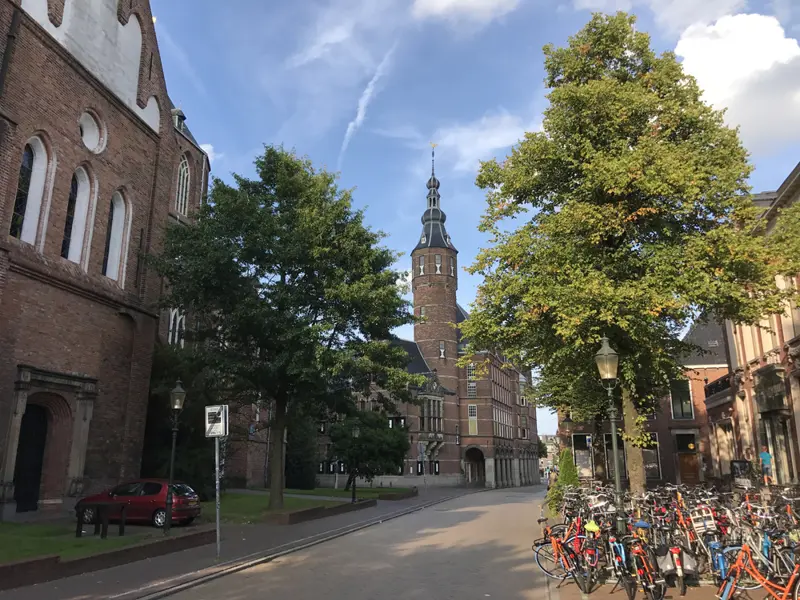
GRAFISCH MUSEUM
Rabenhauptstraat 65
Museum of the graphics industry, design and art. The collection includes old printing machines, machines for page setting, different types of printing tools and lithography. It has been developed over the course of several decades, thanks mainly to the provincial authority of Groningen. The section devoted to the famous artist Werkman, who hailed from Groningen and belonged to the Avant-garde movement of the twenties, is particularly interesting.
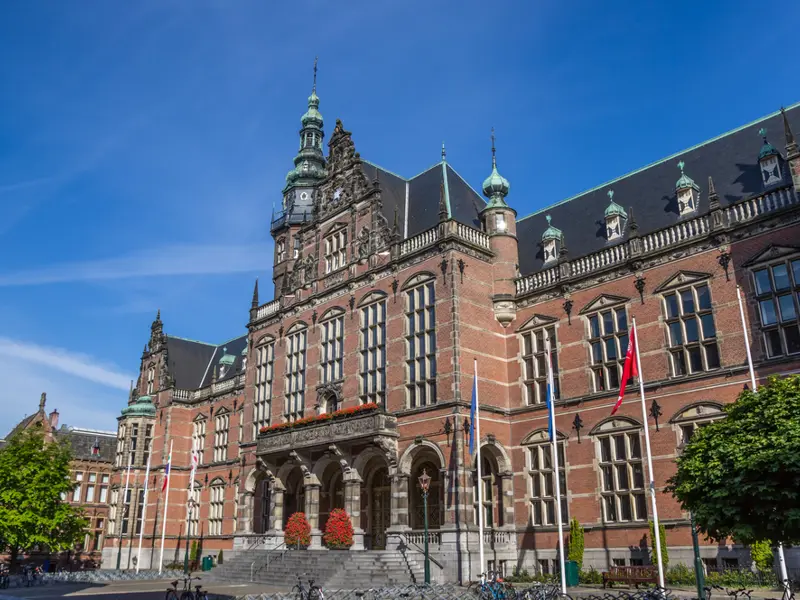
MUSEO UNIVERSITARIO
Oude Kijk in ‘t Jatstraat 7a
Dal 1934, il Museo dell’Università è stato un museo scientifico nel cuore accademico della città di Groningen. Il moderno padiglione al piano terra ospita mostre temporanee mentre al piano superiore si possono osservare vetrine con modelli medici, oggetti etnografici, strumenti fisici e anatomici.
Dal 1934, il Museo dell’Università è stato un museo scientifico nel cuore accademico della città di Groningen. Il moderno padiglione al piano terra ospita mostre temporanee mentre al piano superiore si possono osservare vetrine con modelli medici, oggetti etnografici, strumenti fisici e anatomici.
Excurions
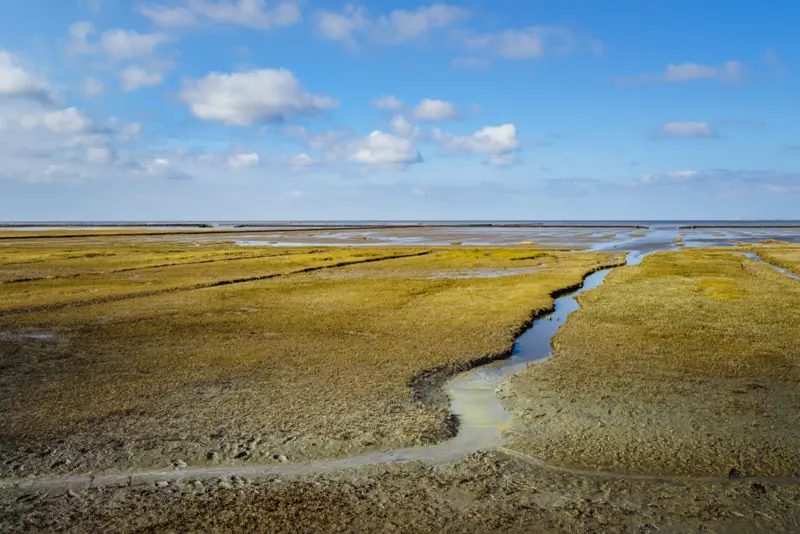
NOORDERZIJL
Wadlopen, or mudflat hiking, takes place on the mud flats revealed during low tide by the Wadden Sea. This uniquely Frisian activity is usually carried out from between 9 and 12.00 before the arrival of high tide. The walk with a guide begins in Noorderzijl, where wellington boots can be hired. Saltwater plants, flowers, birds and fish can be observed along the way. The walk finishes on an island where, on the sand dunes, groups of seals can be observed sunning themselves and feeding their young. Lunch is provided on the boat ride back.
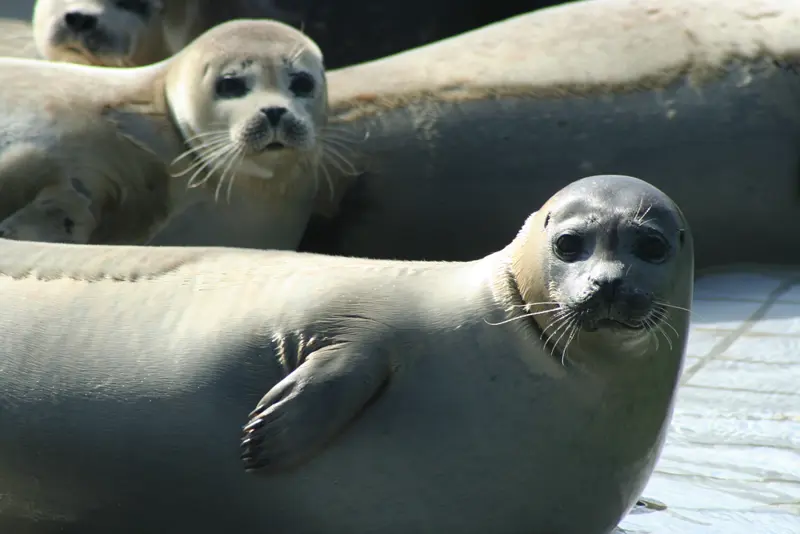
PIETERBUREN
Seal rehabilitation and Research Centre Lenie ‘t Hart
Hoofdstraat 94° - 9968 AG Pieterburen
This is a seal hospital and research and rehabilitation centre, which takes care of animals who are sick because of a compromised immune system or due to the heavily polluted sea. Staff are available to give information on their flippered guests, while children can learn through play about respect for animals and the environment in a dedicated room. Opening hours: every day from 10 to 17.
Hoofdstraat 94° - 9968 AG Pieterburen
This is a seal hospital and research and rehabilitation centre, which takes care of animals who are sick because of a compromised immune system or due to the heavily polluted sea. Staff are available to give information on their flippered guests, while children can learn through play about respect for animals and the environment in a dedicated room. Opening hours: every day from 10 to 17.
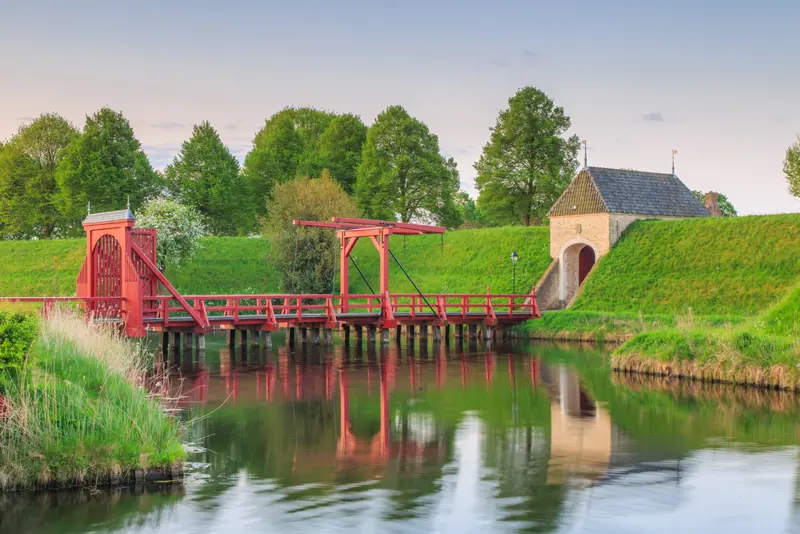
ROTTA DELLA TORBA, DE TURFROUTE
A three-day trip, moving between one village and another, on the canals of the Turfroute Freisland can be enjoyed on boats with cabins equipped for the night. This extensive system of canals with locks and bridges is found in the south-east of Friesland and was dug between 1630 and 1830 to drain the peat which when dried was used as a fuel in the Netherlands until 1900, and then replaced by coal.
The boats stop in Appelsha, Donkerbroek, Hemrik and Wijnjewoude.
The boats stop in Appelsha, Donkerbroek, Hemrik and Wijnjewoude.
Partnership with GetYourGuide
All tours and excursions
You might be interested in
Other destinations


